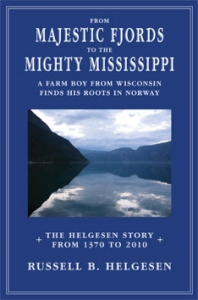I very nearly wasn’t born.
My father told the story of the storm on the Mississippi many times as I was growing up. But I always received it with a typical teenage eye-roll as in, “Oh, DAD.”
It wasn’t until my father turned 90 that I finally understood the significance of that story. It wasn’t until I read it in a book—his book—that it hit home.
Growing up, my relationship with my father often involved butting heads. So it was with some trepidation that I agreed to take his manuscript, his baby, and help him publish it.
When I came to the chapter “The Angel of the Mississippi,” I was no longer rolling my eyes:
With a storm coming and his parishioners begging him to stay the night, my father could not, even with a wrench, get the gas cap off the little motor boat that he used to cross between churches of his three-point parish. Had he managed, he would have drowned in the raging storm that hit the Mighty Mississippi shortly after his scheduled departure. He would have left my mother a widow and my three oldest siblings fatherless: My brother and I would not exist.
The next morning, he went down to the banks and the gas cap came off with the twist of his fingers.
That was when I really understood the power of the printed word. This story, that was so trite to me as a child, gave me chills when I read it and understood the intervention that gave me life.

 As his story unfolded—of his ancestors in Norway, his father on the farm, his own history of being called to the ministry, meeting my mother, his spiritual struggles and transformation, even the cost of every house they bought and sold—I was so grateful that he wrote his life, his memoirs.
As his story unfolded—of his ancestors in Norway, his father on the farm, his own history of being called to the ministry, meeting my mother, his spiritual struggles and transformation, even the cost of every house they bought and sold—I was so grateful that he wrote his life, his memoirs.
It was a labor of love for both of us and his whole family was there when he signed his book for them on his 90th birthday—5 children, 12 grandchildren, 8 great grandchildren, along with one remaining sister, nieces, nephews and even some friends. As he signed my copy, it was the last time we butted heads. Our relationship had been transformed.
There are 17 generations in the genealogy included at the end of his book. We will never know more than the names and dates of most of those souls. But for his great-grandchildren and great-great-grandchildren, they will always be able to pick up this book and know his story—the story of their ancestor. My own children beamed with pride as they showed their teachers and friends.
So, this has become my passion: to help people publish their memoirs. I have shared in each author’s excitement as they watched their manuscript turned into a beautifully typeset book with a professional cover, historic photos, and some with a family tree.
If you’ve written your memoirs—or any other manuscript—I would love to talk with you about what it would take to get it into a paper-and-ink printed version that your grandchildren will be thrilled to show their teachers, and your great-great grandchildren will read with relish.
Mary Helgesen Gabel (b. 1953)
daughter of Russell Helgesen (b. 1920)
granddaughter of Paul Helgesen (b. 1890)
great-granddaughter of Jon Høljesen Grovum (b. 1827)
great-great-granddaughter of Hølje Pålson Grovum (b. 1785)
14th (and 16th) great-granddaughter of Jon På Valebjørg (b. 1370)













Leave A Comment